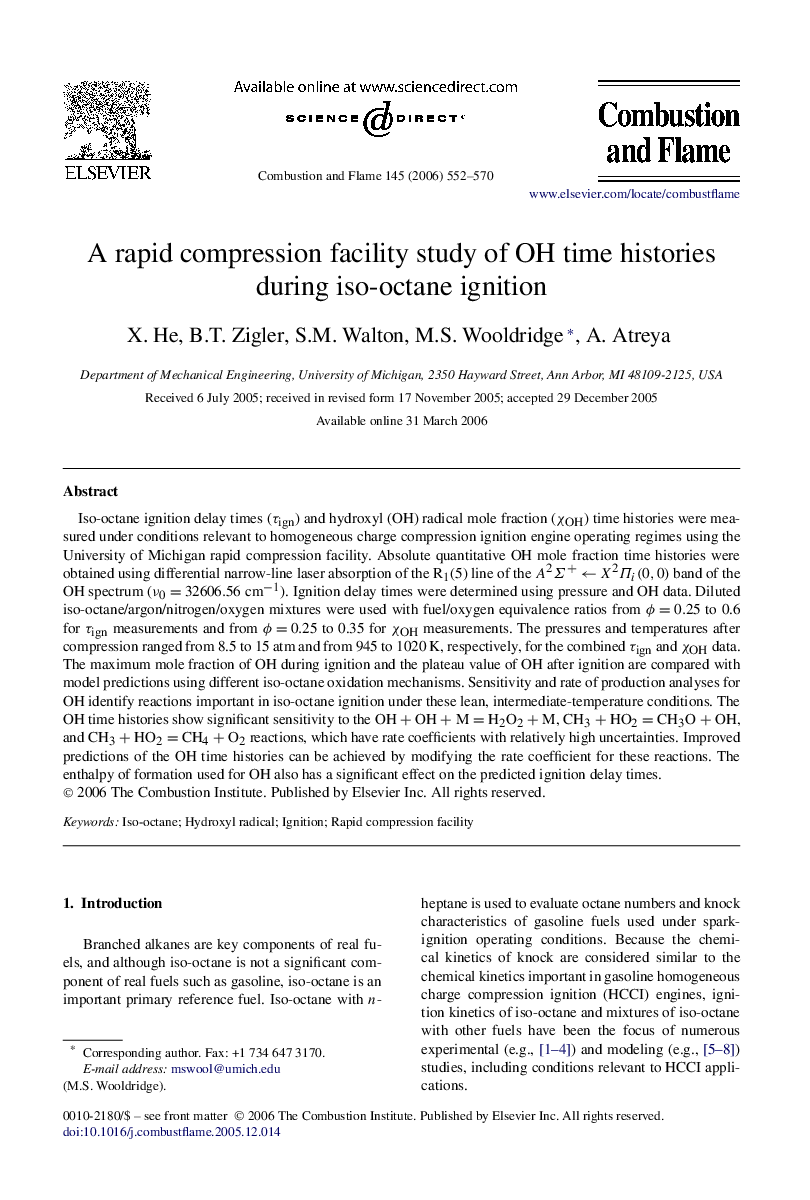| Article ID | Journal | Published Year | Pages | File Type |
|---|---|---|---|---|
| 170159 | Combustion and Flame | 2006 | 19 Pages |
Iso-octane ignition delay times (τignτign) and hydroxyl (OH) radical mole fraction (χOHχOH) time histories were measured under conditions relevant to homogeneous charge compression ignition engine operating regimes using the University of Michigan rapid compression facility. Absolute quantitative OH mole fraction time histories were obtained using differential narrow-line laser absorption of the R1(5) line of the A2Σ+←X2Πi(0,0)A2Σ+←X2Πi(0,0) band of the OH spectrum (ν0=32606.56cm−1). Ignition delay times were determined using pressure and OH data. Diluted iso-octane/argon/nitrogen/oxygen mixtures were used with fuel/oxygen equivalence ratios from ϕ=0.25ϕ=0.25 to 0.6 for τignτign measurements and from ϕ=0.25ϕ=0.25 to 0.35 for χOHχOH measurements. The pressures and temperatures after compression ranged from 8.5 to 15 atm and from 945 to 1020 K, respectively, for the combined τignτign and χOHχOH data. The maximum mole fraction of OH during ignition and the plateau value of OH after ignition are compared with model predictions using different iso-octane oxidation mechanisms. Sensitivity and rate of production analyses for OH identify reactions important in iso-octane ignition under these lean, intermediate-temperature conditions. The OH time histories show significant sensitivity to the OH + OH + M = H2O2 + M, CH3 + HO2 = CH3O + OH, and CH3 + HO2 = CH4 + O2 reactions, which have rate coefficients with relatively high uncertainties. Improved predictions of the OH time histories can be achieved by modifying the rate coefficient for these reactions. The enthalpy of formation used for OH also has a significant effect on the predicted ignition delay times.
